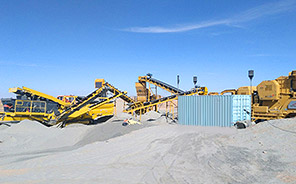Gold mineral processing involves several stages to extract gold from its ore. Here’s an overview of the key processes and machines used in gold processing:
1. Crushing and Grinding
– Purpose: Reduce the size of gold-bearing ore to liberate gold particles.
– Machines Used:
– Jaw Crusher: Primary crushing of large rocks.
– Cone Crusher/Gyratory Crusher: Secondary crushing.
– Ball Mill/Rod Mill: Fine grinding to produce a slurry.
2. Gravity Separation (For Free Gold)
– Purpose: Separate coarse gold particles using density differences.
– Machines Used:
– Shaking Tables
– Spiral Concentrators
– Centrifugal Concentrators (Knelson, Falcon)
– Jigs
 3. Flotation (For Sulfide Ores)
3. Flotation (For Sulfide Ores)
– Purpose: Recover fine gold associated with sulfide minerals.
– Machines Used:
– Flotation Cells (Mechanical/Column Flotation)
– Chemicals: Collectors (e.g., xanthates), frothers, and pH modifiers.
4. Leaching (For Refractory or Oxide Ores)
– # a) Cyanide Leaching
– Most common method for extracting gold from ore.
– Gold dissolves in a cyanide solution (NaCN or KCN) in the presence of oxygen.
– Equipment:
– Leaching Tanks (Agitated or Heap Leach Pads)
– Carbon-in-Pulp (CIP)/Carbon-in-Leach (CIL) Tanks
# b) Non-Cyanide Alternatives
*Thiourea, Thiosulfate, or Chlorination* for eco-friendly options.
5. Gold Recovery Methods
# a) Carbon Adsorption (CIP/CIL)
*Activated carbon* absorbs dissolved gold from leach slurry.
Machines:
*Carbon Columns*
*Elution & Electrowinning Systems*
# b) Merrill-Crowe Process
*Zinc dust precipitation* replaces carbon adsorption in some cases.
# c) Electrowinning & Smelting
*Electrowinning Cells* – Extract gold from solution onto cathodes.
*Furnace Smelting* – Produces doré bars (~90% purity).






Leave a Reply